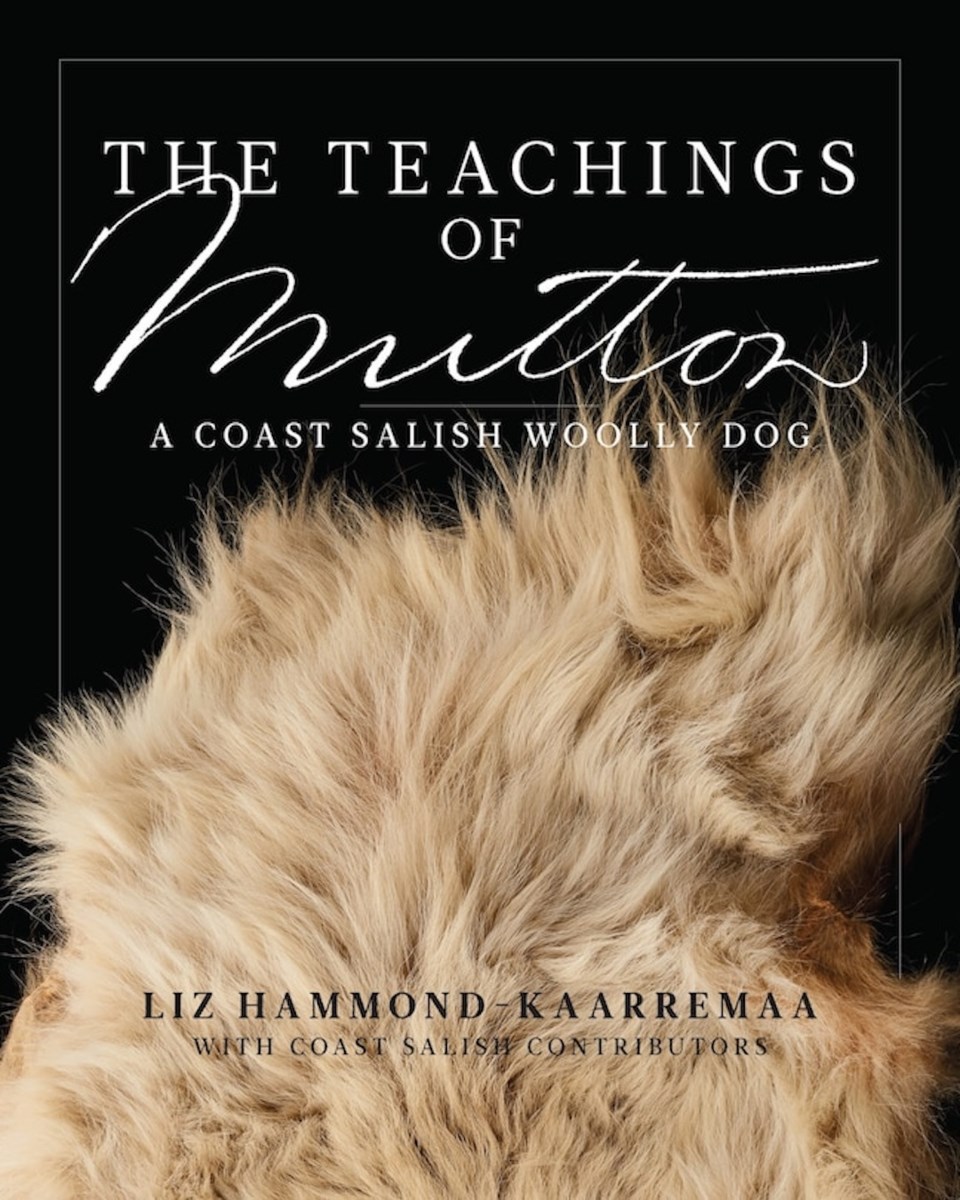A book released last month exploring the history of the extinct Coast Salish Woolly Dog — whose wool-like hair was a longtime mainstay of Coast Salish weaving traditions — is simultaneously a real-life mystery story and a new approach to the literature of reconciliation between Indigenous and non-Indigenous storytellers.
Liz Hammond-Kaarremaa, the retired head of the research department at Vancouver Island University, approached the tale from a unique perspective: as a non-Indigenous woman living in Coast Salish territory, and a dedicated wool spinner.
"I started to learn how to spin in my twenties," Hammond-Kaarremaa recalled, "and ten years before I retired, I thought, I'm going to take another spinning class, to get back into it." She enlisted in a program out of an agricultural college, a commitment of six years with year-long homework assignments. When an assignment demanded a research project involving hands-on spinning, she began her intensive study of Coast Salish spinning tools, techniques and fibres.
It was part of an abiding commitment to connect with Coast Salish heritage: in 2008, she volunteered as a paddler for the Tribal Journeys canoe gathering. "They didn't have enough paddlers," she said. "I volunteered because I'm a kayaker, a dragon boater and outrigger. I had no idea what I was getting into, and it just opened my eyes to the fact that as much as I appreciated First Nations art, I knew nothing, really, about First Nations."
Her book — The Teachings of Mutton: A Coast Salish Woolly Dog — was launched last month during a gathering at UBC's Museum of Anthropology. The Mutton of its title refers to the name of a Woolly Dog specimen preserved in the Smithsonian Institution in 1859, donated by Dr. Caleb Kennerly. Kennerly's contribution was forgotten for 140 years. It was finally rediscovered by an archives volunteer, Candace Wellman, in 2002, as she was researching the lives of Indigenous women of the northwest.
"Gosh, it's like I made a scientific discovery, instead of all the experts," exclaimed Wellman.
In Hammond-Kaarremaa's suspenseful account, she approaches Drawer #4 a decade later, preparing to view (and touch) the only remaining Woolly Dog specimen. Her first-hand anecdotes and visceral revelations anchor historical perspectives on the symbiotic relationship between Coast Salish communities and the Woolly Dog.
As her research began to illuminate the dog's distinctive DNA, she assembled a Coast Salish advisory committee, interviewing people about stories and memories related to the species. "When I interviewed people, I also asked the advisory committee: aside from my academic paper, how would you like this information shared?"
Their answers were twofold: a book, and a movie. The film documentary, directed by Pennsylvania State University professor Kirk French, will be completed this fall. But Hammond-Kaarremaa knew that her published account would be incomplete without the voice of co-contributors from Coast Salish nations so, 14 such accounts buttress her narrative, including those from storytellers of the Sḵwx̱wú7mesh Úxwumixw (Squamish Nation). Jared Qwustenuxun Williams, of the Cowichan people, described his original ancestor, Stutsun, who cried, "Oh, great Creator, please send me a friend so that I may share this beautiful land that you have shared with me." Out of a dark cave emerged a Woolly Dog, which Stutsun named Swuq'us. The legendary dog "still lives on in our language and in our place names," said Williams.
The next printing of the book, by Harbour Publishing, will list the Indigenous contributors as co-authors — at Hammond-Kaarremaa's insistence.
"One of my hopes was to use the book to open doors for people," she explained. "It could be a small way of reconciliation, because people have to learn what happened to the Woolly Dog. And people love dogs. So it is also another way of people connecting with the story and our shared history."
Drawing on her spinner's experience, Hammond-Kaarremaa details the characteristics of Woolly Dog wool, the dog's ancient origins, and even develops theories about its diet. The book is lavishly illustrated with archival photographs and illustrations. Hammond-Kaarremaa sublimates her academic research into accessible prose that puts characters — both people and dogs — in the spotlight.
"I have to admit I just won't ever stop researching it," she said. "There are so many different rabbit holes you could go down, and more information might come out that will shed a new light, or a different light."
Copies of The Teachings of Mutton: A Coast Salish Woolly Dog are on sale at all Sunshine Coast bookshops (including the Sunshine Coast Museum and Archives) and via online retailers.



